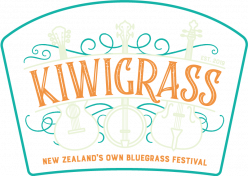If you are a normal human being (slightly debatable since you are at a bluegrass festival), unconsciously you already know how to join in a jam without making a fool of yourself. It works much the same way you joined in games as a kid, you sort of edge in and watch for a while, without being too pushy, until you are accepted into the group.
Don’t worry though, bluegrass people are nicer than kids.
You can start your own jam by approaching a likely looking fellow musician and start a jam together.
If you see an existing jam session you might want to join, listen for a while to make sure you are not walking into something over your head. Look for a group who are playing at a level you are comfortable with.
If there are a lot of people already playing your instrument in the jam, consider moving off to form another group, especially if you play the banjo. As the legendary Dr Banjo, Pete Wernick says, one banjo in a jam session is enough – and he should know.
Double bass: there can be only one! If there is already a bass player in a jam session let them know you’re there and perhaps share the bass duties. The bass can be exhausting work in a jam (everyone but you gets to sit down) and having someone to swap out with so you can have a break and a chat is a good thing.
In any event, take your time, be considerate, show willingness to listen and you will be gradually invited to contribute.
If you want to play but you aren’t confident just sit on the edge of the jam.
Listen, listen, listen. Watch, watch, watch.
Suggest good jamming tunes
If you suggest a tune to jam on, it should be one that you personally know well, both chords and words. She who calls the song, sings the song. Also, make sure the song is appropriate to the jam. A group of relative beginners may not be keen to play a song they’ve never heard in the key of Q-minor and with 7 chords, and 4 separate parts.
Jamming songs are either simple songs, or a standards that many players know.
If your new original song is simple that’s fine, but when you added those key modulations and oddball chords in the bridge to make it different from all the other songs out there, you blew its chances as a jamming song.
Suggesting songs that people have difficulty following or trying to teach everybody a new song with complicated chords is likely to make people uncomfortable, and you will see your new found coolness evaporating.
However if there is one ‘trick’ chord in an otherwise simple song, then yell out what it is – “there’s a Bb in the chorus” and people can pick it up.
If you are a guitarist play the chords in obvious shapes so everyone can see. If you are not a guitarist learn to recognise basic guitar chords.
Don’t play “guess the song”
You are not a game show host. By all means, if the time is right, launch into a well known song, but starting to play and looking around expectantly for everybody to guess what the song is, well that’s just as boring as that game show you secretly want to host.
Suggest a song by name unless it’s a well known standard and tell us the key. Then go for it and we will all be able to follow the first verse.
How to lead a song
If you started the song have the decency to lead it. Catch the eye of the next instrumentalist and nod to them and or verbally cue them when to go for it. Yell “Let’s hear some mandolin,” and everyone will know and thank you for it.
If you don’t want to take a break because they are all hot pickers and your fingers are sore, you could stare at the floor for a while, but it is way better just give the leader a slight shake of the head, and you will be skipped.
When playing in a jam you need to watch for those cues so you know what is happening and who is going to play next.
If you lead a song be prepared to play a strong rhythm to keep the group together. You may even have to skip your break.
Don’t get stuck leading a song that won’t die. When it’s time to wrap it up, stick a leg out towards the middle in the internationally accepted bluegrass jam sign for “the end is nigh.”
When not to play
Playing in time is the most important thing – if you can’t manage it, or it is too fast, sit out for that song.
If it get messy through too many instruments playing – don’t play for a while.
You don’t need to play at full volume all the time. When a quieter instrument like acoustic guitar is taking a lead break, or the vocalist is singing, play quietly or not at all.
The reunion
There you are jamming away having a great time and you look up and there is and an old friend from the last festival. Excited to see them, you ask them how the family are, what they ate for Christmas dinner, and relate the lastest banjo joke. After telling them how you kids seem to have grown amazingly fast, and how terrible traffic was on the way here, you turn back to the jam only to find no-one is there. If this happens to you, learn from the experience, and next time don’t be so rude.
If you really can’t keep your innocent chatter to the lull between songs, please, step right away from the jam for a bit.
Tuning
Make sure you are in tune, and give others time and space to tune. For God’s sake, buy a tuner and use it.
Graceful exits
It’s OK to leave. Jams often have cycles. They start really well so people join in, before you know it, there are twelve guitars, and it becomes a big ugly monster, so people leave, (but maybe the magic has gone).
The trick is to leave your case on the periphery so you can walk out without making a big deal and bashing everybody’s precious Gibson with your case.
Mutter something like “It’s been great but I gotta pee,” or drink, or sleep, or whatever. Go. It’s OK, nobody thinks you really have to do those things but you can hardly say “I am leaving now to go and see if I can find a better jam.” That would be bad music manners.
Kiwigrass is produced with the support of:

and in association with :






